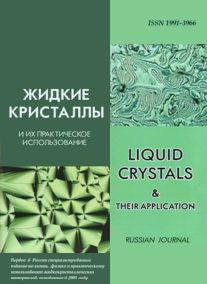|

|
Liquid Crystals and their Application
Russian Journal Zhidkie kristally i ikh prakticheskoe ispol'zovanie Жидкие кристаллы и их практическое использование |

|
|

|

|
|
|
Menu

|
|
|
|
|
Zhidk. krist. ikh prakt. ispol'z. = Liq. Cryst. and their Appl., 2014, 14 (2), 74—82. |

|
|
Non-Newtonian Flow of Structured Systems. X. The Limits of Non-Newtonian Behavior
|
E. A. Kirsanov, Yu. N. Timoshin
|
Author affiliations
Moscow State Region Socio-Humanitarian Institute
Zelenaya st., 30, 140410 Kolomna, Moscow Region, Russia.
E-mail: Kirsanov47@mail.ru
|
|
Abstract
The limits problem of non-Newtonian behavior of molecular liquids considered. Usually substance with an average molecular weight exhibit Newtonian behavior in the range of low shear rates. However, when it reaches a certain critical shear rate, the viscosity begins to decrease. Critical shear rate of transition from Newtonian regime to pseudoplastic flow regime increases with decreasing molecular weight of the polymer melt.
The flow of silicone oil is described in terms of structural rheological model with the aid of generalized flow equation. The structural part of the viscosity is determined by the expression τc1/2/χ. The coefficient in-creases dramatically with decreasing molecular weight. For example, the value for melts of conventional polymers (polyethylene, polypropylene) has a relatively small amount of from 0.3 to 7 s-1/2, which corresponds to the high structural viscosity. The coefficient dramatically increases with decreasing molecular weight: 21 at 145000 g / cm3 and 553 at 40000 g / cm3 for silicone oils Rhodorsil Oil 47
Keywords: non-Newtonian flow, silicone oil, generalized flow equation
|
|
|
|
|
|




